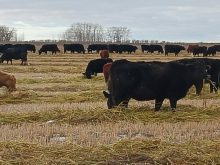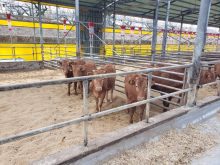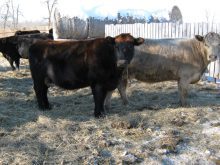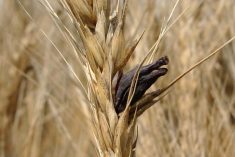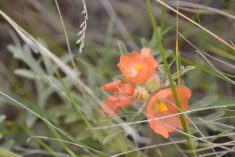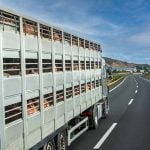Quantity and quality of forage at the end of this summer for beef cows is short. So, where burnt pastures can no longer support the average beef cowherd, whatever forage is on hand with the right supplements might be turned into a sufficient autumn feeding program until winter.
The goal of any good fall feeding program in drought or even with adequate rainfall is to maintain the beef cows’ body condition. A cow going into winter with an optimum body condition score (BCS) of five to six (One is emaciated while nine is obese) has a better chance of maintaining health and a trouble-free pregnancy. This compares to a thin cow with a BCS < 4.0, which will likely have a difficult time surviving winter, often ending in a difficult calving season.
Early to mid-gestation mature cows, starting off in relatively good shape make the best candidates to be sustained on nutritionally challenged forages complimented with other feedstuffs. To support vital functions and an early-term fetus; these cows have a require 52 – 55 per cent TDN (dietary energy), nine to 10 per cent crude protein, 0.40 per cent calcium, 0.25 per cent phosphorus, 0.20 per cent magnesium and salt, essential trace minerals and vitamins.
Read Also

Gentle treatments for pain in the neck
Heading toward year-end, people unknowingly tense up against the cold and busyness, causing neck pain that can often be treated with appropriate support and gentle mobility, athletic therapist Kathlyn Hossack says.
By end of a drought summer, many dire cows are not producing significant amounts of milk. Even if they did, it’s a good idea this year in many areas to early wean their calves. A lot of people simply creep them in drylot. This saves up to 20 per cent dietary energy and protein that the lactating cow would otherwise need.
One producer (250 beef cows) that lives in the southern prairies told me that he has no intention of ditching science that wrote these nutrient requirements. Yet, he has no intention of feeding alfalfa-grass hay at over $200/mt and $10-bushel barley. Rather, he is rotational grazing until the end of August, then weaning his calves and feeding his beef cows in his feedlot at home.
The cows will be switched (he is already putting out straw bales and 20 per cent protein low-molasses lick tubs on pasture) to an autumn diet of barley straw, complimented with corn distillers’ grains and a 2:1 cattle mineral w salt (Note: He managed to secure 150 bales of fair-quality grass hay to be fed toward calving in February). In addition, newly weaned calves (350 – 400 lbs) will be crept-fed upon a diet of oat-barley greenfeed and four to five lbs of an 18 per cent grain-screening pellet.
The economics of his diet (#1) as well as some diets of his friends are illustrated in the chart below.

In all four diets, I made ball-park guesses as to the dietary energy and protein of these three forages: cereal straw compared to perennial rye-grass straw compared to bull-rushes. Furthermore, I estimated the dollar value of each forage and commodity. As a result, the lower nutritious forage – ground bull-rushes required more nutrient supplementation, yet surprisingly were either the lowest cost diet or were in-line with the other fall diets. Notably, missing from this table is any mention of barley grain or alfalfa-grass hay.
Consequently, one thing that I am advocating this year when putting together fall feeding diets is to test all forages for nitrates. That’s because, nitrates are notorious for accumulating in many types of these drought-stricken forages. Mature cows and replacement heifers can safely consume a diet (dm, basis) containing nitrates that are below 0.5 per cent nitrate (NO3). The same bales should also be tested for molds and mycotoxins. Last, I would also test forages like perennial ryegrass for the endophytes’ toxins.
Otherwise, these are the right type of diets to feed to early- and mid-gestation beef cows for the next few autumn months and even into early winter. Their success is how well that they support the cows’ nutrient requirements in order to maintain adequate body condition. Once they achieve this goal, it will probably be a few months away from the calving season, and people should be prepared to put their beef cows on a higher plane of nutrition.





